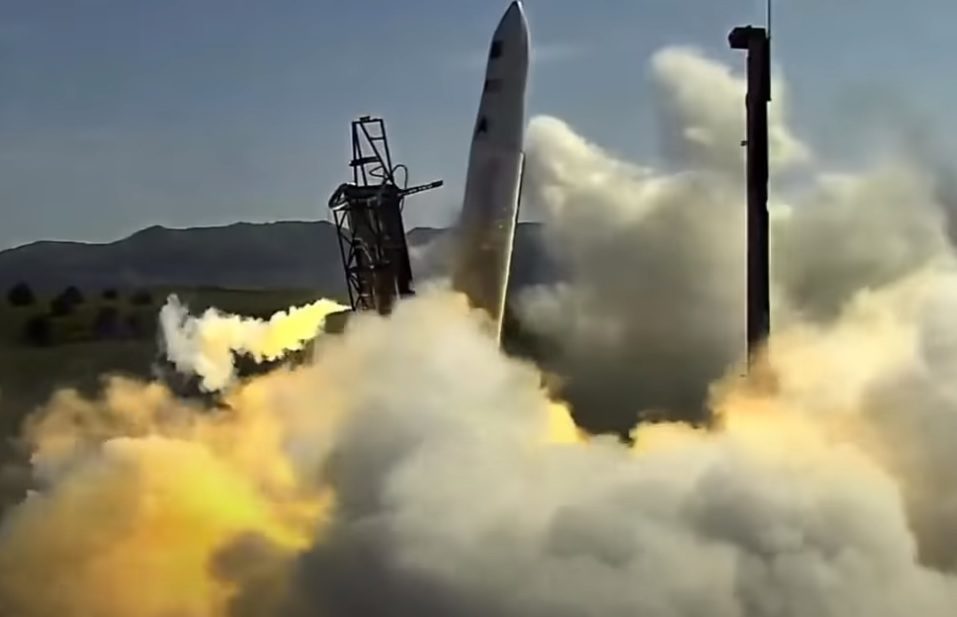Two firms at different points along the process of developing an orbital rocket have outlined plans for their next launches.
Having had its previous mission carrying an instrumented payload for the United States Space Force (USSF) not quite reach orbit in December 2020, and with two failures and an on-pad failure before that, the start-up US launch provider Astra Space was hoping for better for its next Astra Rocket 3 launch. However, less than one second after lift-off at 2245 GMT on 28 August from its launch site in Kodiak Island, one of the launch vehicle’s five LOx/Kerosene powered Delfin engines on the first stage failed. The rocket managed to leave the ground but only had enough thrust to only very slowly lift off, even appearing to slide sidewards for a time.
As the propellants began to be depleted, and with the rocket’s guidance system back in full control, the rocket then appeared to take a more normal acceleration and trajectory arc. However, as it flew on it became apparent that the Astra Rocket 3’s trajectory was still not normal, and at 2 minutes 28 seconds after lift-off and at an altitude of 50 km, the range safety officer commanded the remaining engines to be shut down. The rocket fell down range into the Pacific Ocean.

A frame from footage of the Astra Space launch attempt in September. Courtesy: nasaspaceflight.com via YouTube
Astra Space engineers later disclosed that before the launch propellants leaked from the distribution system, mixed and became trapped in an enclosed space beneath the interface between the rocket and the launch pad. On ignition the leaked propellants were ignited by the engine exhaust and the explosive overpressure event severed the connection to the electronics that control the fuel pump, shutting down one of the first-stage engines less than one second after lift-off. Subsequent modifications for later launches were made to the propellant supply mechanism to minimise leakage and propellants mixing should leaks occur. The cover was also removed to eliminate the confined space problem.
A new launch attempt, scheduled for 27 October at the earliest, will again be on behalf of the USSF (US Space Force) as the second part of a two-part launch contract signed on 5 August. The mission was due to carry an instrumented dummy payload only identified as STP-27AD2.
On the other side of the Pacific, TiSPACE, Taiwan also hopes for better with its planned second sub-orbital development flight of its suborbital Hapith-I rocket. On its first flight on 16th September during ignition and initial lift-off the launch vehicle suffered an internal fault causing it to catch alight. The rocket then fell onto the starboard side of the pad. The rocket’s first-stage tank/pipework ruptured on impact but the rocket did not explode. The fire was contained at the pad and dealt with by fire crews. Only the flame deflector on the pad was seriously damaged.
For its development launches, TiSPACE is utilising a commercial launch complex in Southern Australia run by Southern Launch. TiSPACE hopes that its second rocket will be able to launch before the end of the year. The two-stage Hapith-I rocket is partly a technology pathfinder for a planned Hapith-V three-stage orbital vehicle which TiSPACE hopes will be able to launch during 2022.
David Todd contributed to this story
.







